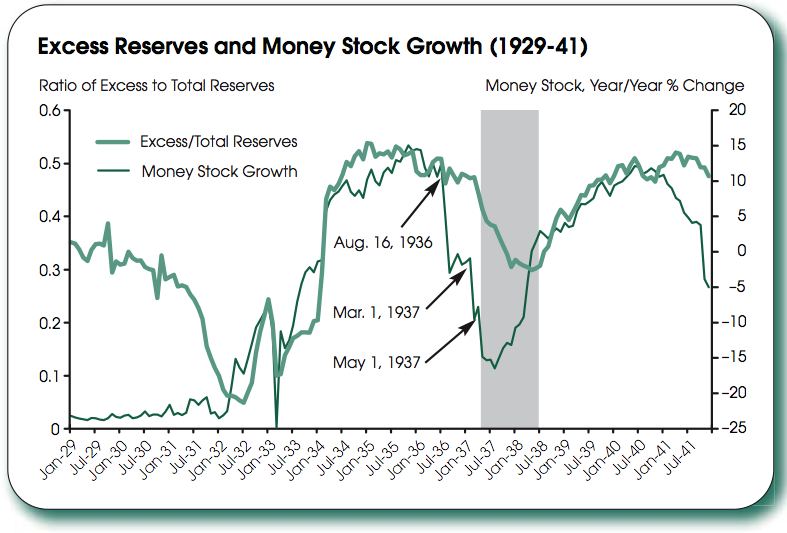Here is something I never expected to be linking to on a Saturday afternoon, via the St. Louis Fed’s David C. Wheelock: How Not to Reduce Excess Reserves:
The Federal Reserve’s actions to support financial markets and the broader economy have resulted in a large increase in bank reserves—both total reserves and reserves held in excess of legal requirements—since September 2008.1Excess reserves have risen from an average of less than 5 percent of total reserves during the 5 years ending in August 2008 to more than 90 percent since November 2008. Many observers contend that the large increase in excess reserves poses a significant inflation risk. A look back at a similar episode during the 1930s provides some insights about how not to reduce excess reserves.
Consider the chart below as a textbook example of what David says not to do:
“In 1936, officials decided to increase reserve requirements in three steps—from 13 percent to 26 percent on transactions deposits and from 3 to 6 percent on time deposits . . .
The chart shows the dates of each increase in reserve requirements. The policy was successful in reducing both total excess reserves and the ratio of excess to total reserves. However, interest rates also rose, money stock growth declined sharply, and in May 1937 the economy entered a reces-
sion (the shaded region in the figure represents the recessionary period).”Excess/Total Reserves Money Stock Growth
Chart courtesy of St. Louis Fed
>
Source:
How Not To Reduce Excess Reserves
David C. Wheelock
St. Louis Fed September 2009
http://research.stlouisfed.org/publications/mt/20090901/mtpub.pdf



What's been said:
Discussions found on the web: